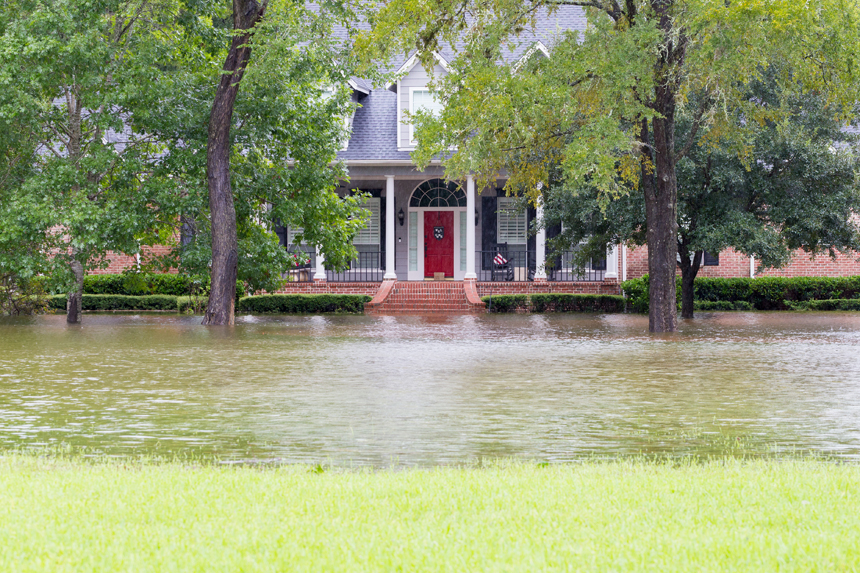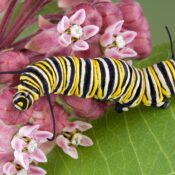It can be tough to find levity when you’re neck-deep in an unpleasant transition. My ex-wife, when our divorce was finalized, gave me a shirt that read: “Change is Good. You Go First,” which brought a welcome laugh at a challenging time. Thankfully, divorce is not a universal experience. Climate change, though, affects us all, and I’m still looking for the hilarity in it. Extreme weather such as droughts and damaging storms are becoming more frequent and severe, killing large numbers of trees and damaging even more.
We can’t stop this trend on a dime, mainly because everything costs more than ten cents these days, but we can do a clever end-run around it by planting trees that are more resilient in the face of harsh conditions. We can also use a few simple and effective tricks to keep our trees healthier and make them more resistant to breakage.
Our changed weather patterns impact trees in different ways. Because of warming in the Arctic, the jet stream has apparently been getting stuck during the summer. Maybe a shot of WD-40 is all the jet stream needs, but until someone figures it out, we typically get one weather “flavor” for months on end.
A case in point is the alternating drought-flood pattern seen in most of the continental U.S. for the past couple decades, resulting in all-time high USDA disaster-relief payments to farmers. Ruinous floods in 2013, 2017, and 2019, and severe droughts in 2012, 2016, and 2018 are our “new normal.”


When summers are radically wetter than historical norms, benign microbes become agents of tree mortality. The upshot of this is that needlecast diseases are killing more conifers than ever before, while anthracnose of deciduous trees is also on the rise.

In drought seasons, tree root systems die back tremendously, killing weak trees, but making all trees more vulnerable to pests and diseases for many years afterward. When drought years follow defoliation by spongy-moth or tent caterpillars, trees like red oaks and sugar maples can die in large numbers.
Trees to Avoid
Sometimes the solution is not to do stuff, a strategy I enjoy.
- Colorado “blue” spruce (Picea pungens) is so vulnerable to needlecast diseases that I believe it should no longer be planted in the Northeast United States.
- Katsura trees (Cercidiphyllum japonicum) are a favorite, but they can’t weather even moderately dry conditions. They’re also salt-intolerant, making them a poor choice for along streets.
- European weeping birch (Betula pendula), paper birch ( papyrifera), and gray birch (B. populifolia) quite often succumb to the bronze birch borer.
Trees to Embrace
Well, it’s good to embrace as many trees as possible. While I once believed native species were always best, in our changing climate, non-regional trees should be more widely planted.

- Ginkgo (Ginkgo biloba) can handle severe drought, high soil pH, deicing salt, and air pollution. It’s also largely maintenance-free.
- Japanese tree lilacs (Syringa reticulata) produce lush blooms and are perfect for under utility wires where tall trees would interfere. In addition, they have few pests and diseases.
- Norway spruce (Picea abies) is very resistant to needlecast diseases that decimate Colorado and other spruces, and it’s good on marginally wet sites.
- Crabapples (Malus spp.) now face higher disease pressure. But if you get disease-resistant varieties and plant only on full-sun sites, they can bring beauty for hundreds of years.
- The Kentucky coffeetree (Gymnocladus dioecious) is fantastically drought-resistant. It also survives air pollution, high soil pH, and occasional wet conditions.
- The Northern catalpa (Catalpa speciosa) is fairly drought-resistant, and will endure intermittent flooding, too.
- Honey locusts (Gleditsia triacanthos) laugh at deicing salt, drought, and occasional floods, and manage well in compacted soils
- The Hackberry (Celtis occidentalis) remains happy in the severest droughts, and it doesn’t mind intermittently wet feet.
- With an 800-year lifespan, the Bur oak (Quercus macrocarpa) is a true legacy. It’s super drought-tolerant, yet fine with heavy seasonal flooding. They can be tricky to transplant, so use only small stock.
- River birch (Betula nigra) is a good substitute for white-barked birches, as it is rarely attacked by bronze birch borers. It’s not drought-tolerant, but great for seasonally wet sites.
Tricks for Disaster-Proofing Trees
Attention to details makes a difference.
- Surprisingly, large-caliper trees fare worse than smaller stock. Research indicates 2” is the largest caliper size that should be planted. (Caliper is the diameter of a tree 4.5 feet off the ground.)
- Studies show removing wire and burlap once the tree is situated in the planting hole is essential.
- After the tree is planted, mulching 3-5 inches deep out to the drip line (branch projection) will conserve moisture, suppress weeds, and moderate soil temperature. However, avoid “volcanoes” – mulch should never touch the trunk.
- Avoid staking transplants, as it causes abnormally weak trunks that are prone to breakage.
- Pruning young trees to maintain a single central trunk, as well as to remove weak unions and branches that are crossing, dead, or diseased will minimize the risk of storm breakage when the tree is mature.
Maybe it’s too early to laugh at climate change, but we can at least thumb our noses at it by cultivating trees that are more likely to weather its droughts, floods, and storms.
Become a Saturday Evening Post member and enjoy unlimited access. Subscribe now




Comments
This is really good important information, Paul. Things definitely need to thought out a lot more in which trees need to be planted and where across the U.S. You’re offering logical, viable solutions. I hope you can get this into the hands of those in charge on a mass scale. Counteracting climate change this way is an important tool in taking positive action to fight it, we can control.